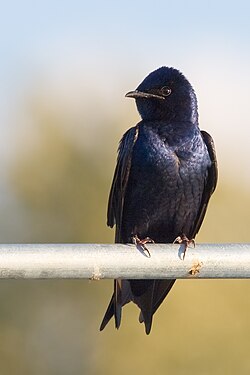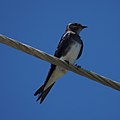| Progne | |
|---|---|
 | |
| Male Purple martin (Progne subis) | |
| Scientific classification | |
| Kingdom: | Animalia |
| Phylum: | Chordata |
| Class: | Aves |
| Order: | Passeriformes |
| Family: | Hirundinidae |
| Subfamily: | Hirundininae |
| Genus: | Progne F. Boie, 1826 |
| Type species | |
| Hirundo purpurea [1] = Hirundo subis | |
| Species | |
9, See text | |
Progne is a genus of passerine birds in the swallow family Hirundinidae. The species are found in the New World and all have "martin" in their common name.





